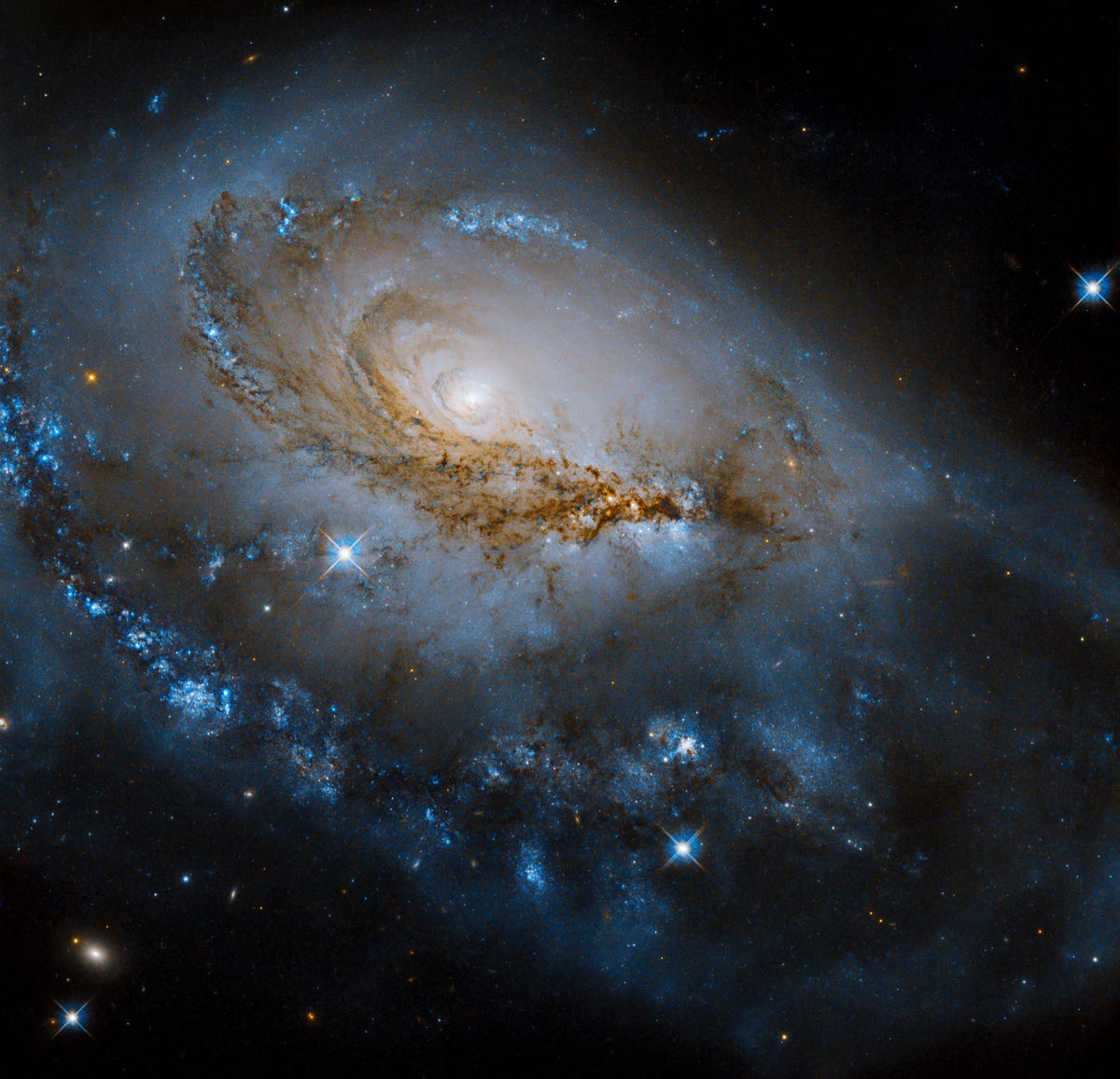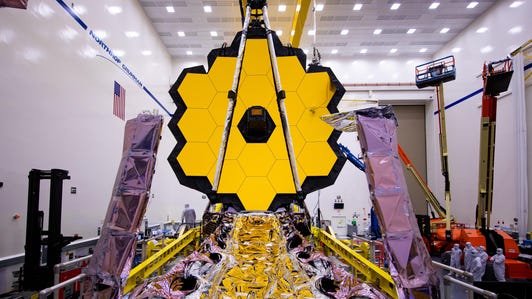
Like dogs, all galaxies are good galaxies. But there's just something about a spiral galaxy that gladdens my heart. Maybe it's the swirling sense of symmetry. Maybe it's because our own home Milky Way is a spiral. A new Hubble Space Telescope image of spiral galaxy NGC 1961 is giving me all the feels.
The scenic spiral is far away at a distance of 180 million light-years in the constellation Camelopardalis, also known as the Giraffe.
Here's the full Hubble view:
NGC 1961 in all its glory.
NASA, ESA, J. Dalcanton (University of Washington), R. Foley (University of California - Santa Cruz); Image processing: G. Kober (NASA Goddard/Catholic University of America)NASA shared the Hubble image on Wednesday. "Glittering, blue regions of bright young stars dot the dusty spiral arms winding around the galaxy's glowing center," the space agency said, showing a flair for poetic language.
There are different kinds of spiral galaxies. NASA classifies NGC 1961 as an intermediate spiral galaxy. The intermediate designation puts it in a gray area between spiral galaxies that have a notable bar of stars at their centers and those that don't. Check out this example of a barred galaxy appropriately called the Great Barred Spiral Galaxy.
NGC 1961 is also an active galactic nuclei (AGN) galaxy. "AGN galaxies have very bright centers that often far outshine the rest of the galaxy at certain wavelengths of light," said NASA. "These galaxies likely have supermassive black holes at their cores churning out bright jets and winds that shape their evolution."
But back to why I'm so enamored of this galaxy. It's the glow, the glitter, the slight angle, the swirls, like a cosmic Charybdis posing for a glamor shot. It's a dream-like image showing how a telescope can deliver a work of art every bit as moving as a fine painting. In short, it's just beautiful.









 Add Category
Add Category


